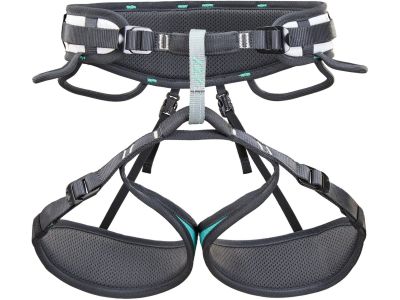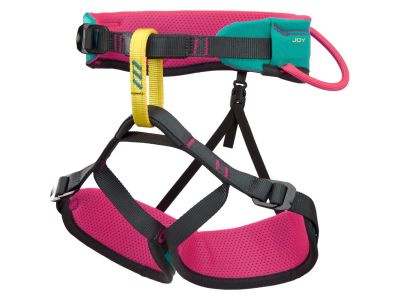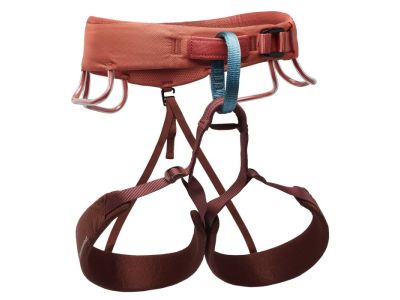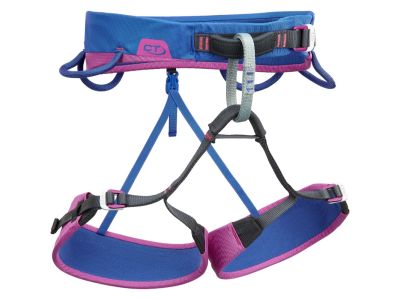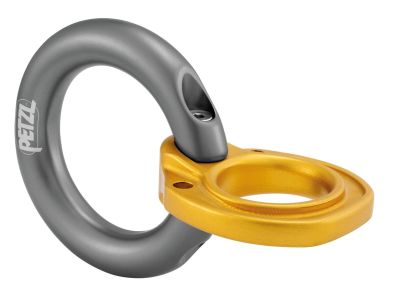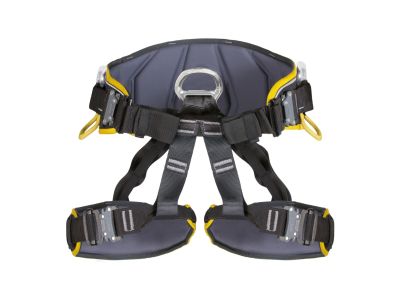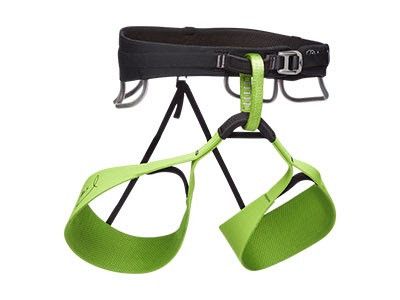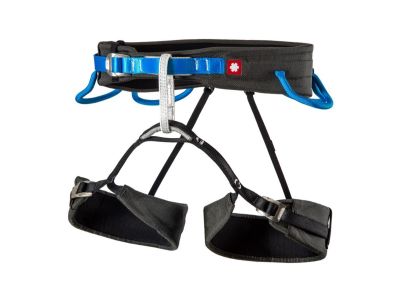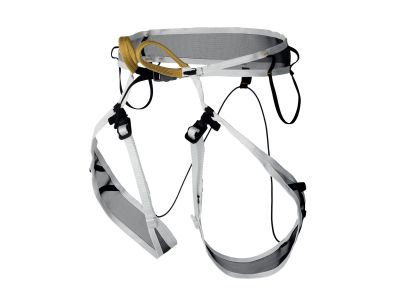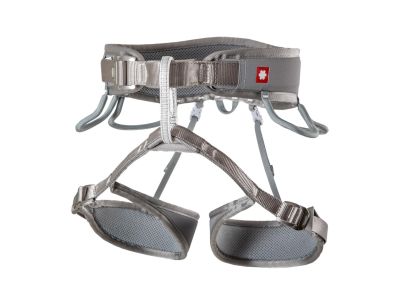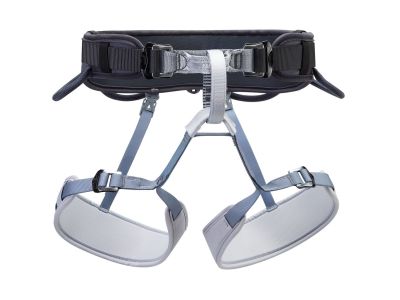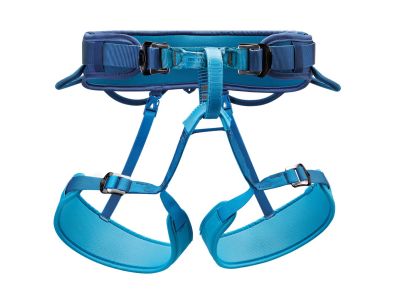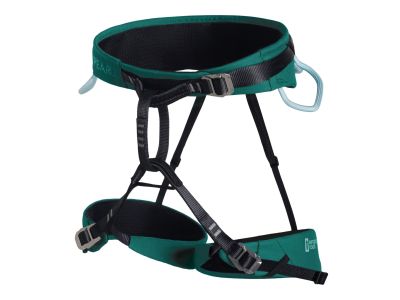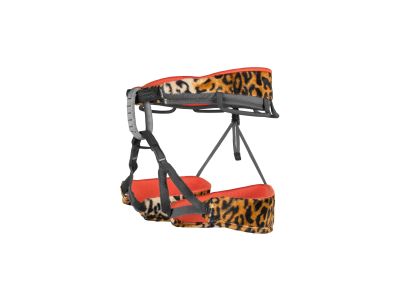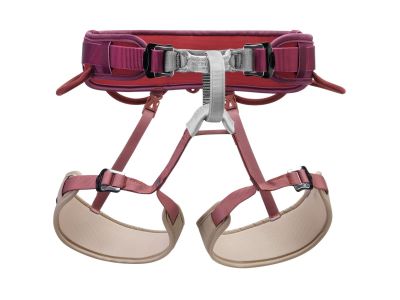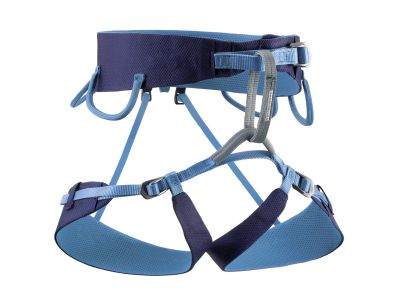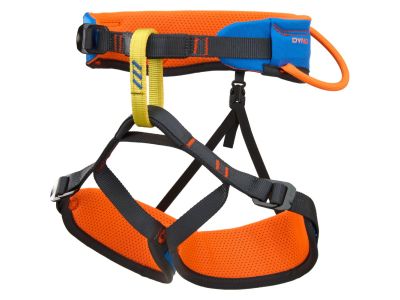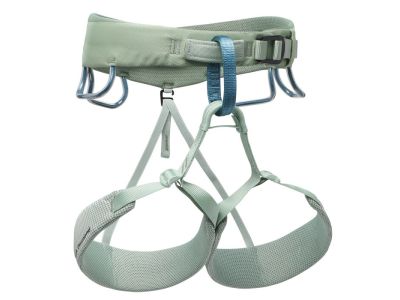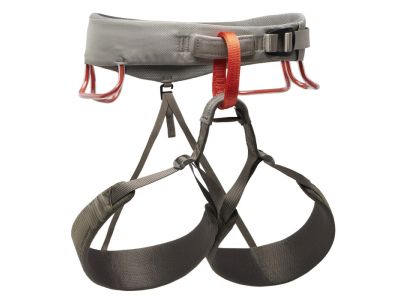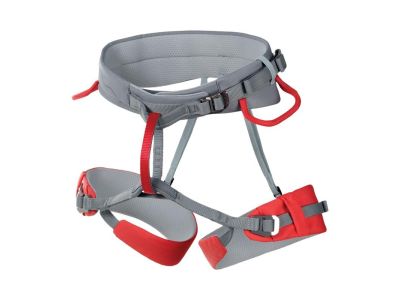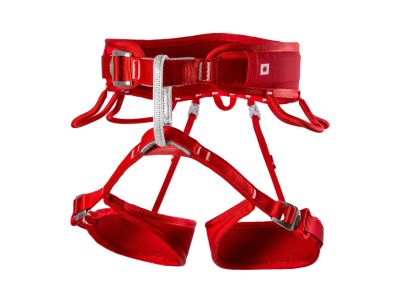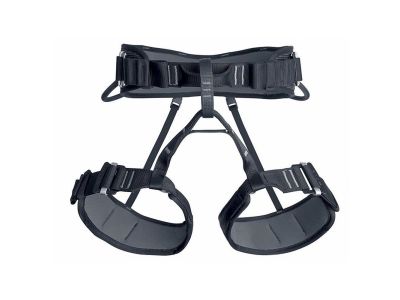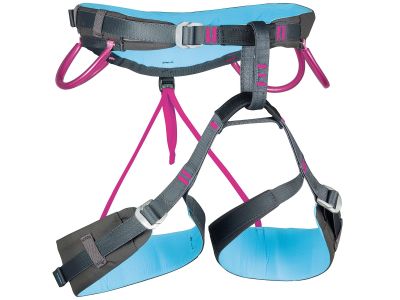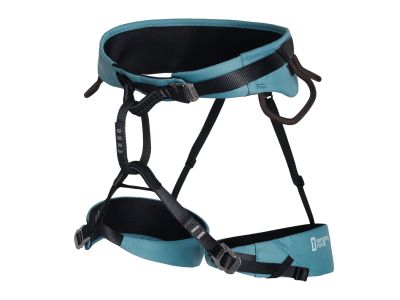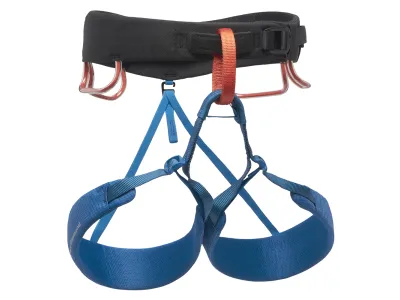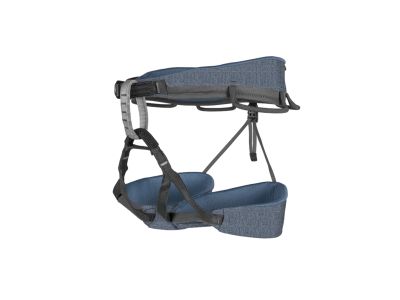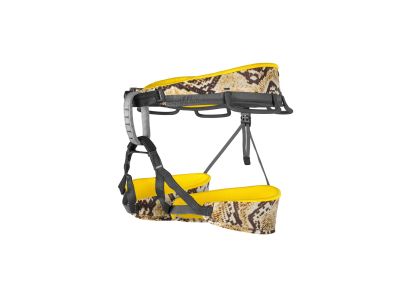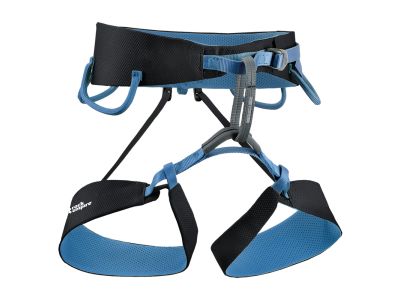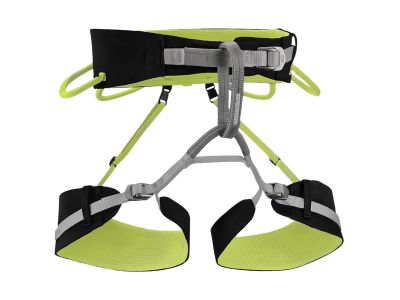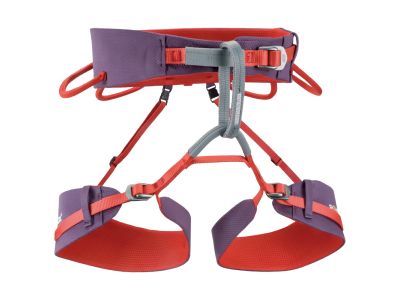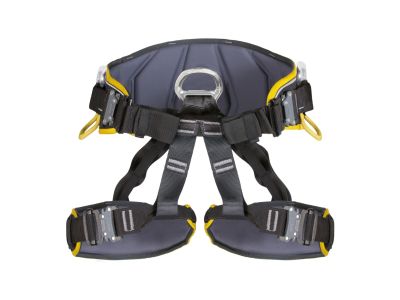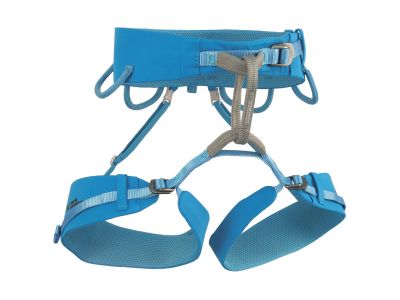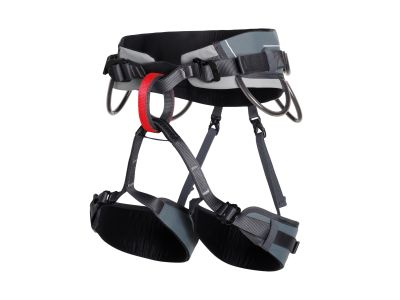A via ferrata harness is a specialized climbing harness designed primarily for use on via ferratas, which is a type of climbing activity that involves overcoming vertical or steep terrain using fixed ropes, ladders, and other artificial aids. The via ferrata harness is specifically designed to provide comfort, safety, and freedom of movement during via ferrata activities.
A seat harness is worn around the waist and thighs, with adjustable straps that ensure a secure and comfortable fit. It is equipped with attachment points, usually located at the front and back, to which climbers can attach their via ferrata ropes or fall absorbers. These absorbers are then connected to fixed ropes or anchors along the route, providing protection and preventing falls.
What are the benefits and purpose of using seat belts?
Via ferrata harnesses and their use bring the following benefits:
- Safety: The harness helps prevent falls and keeps the climber safe. Attachment points on the seat harness allow climbers to connect to fixed ropes and provide a reliable anchor point in case of slipping or losing balance.
- Comfort: Seat harnesses are designed with padding and adjustable straps to ensure comfort during long climbs and belays. The padded hip belt and leg loops distribute the load evenly, reducing pressure points and discomfort.
- Freedom of movement: The seat harness is designed to allow a wide range of movement while maintaining safety. It is flexible enough to allow climbers to move their legs and upper body freely, making it easier to overcome difficult sections of the via ferrata route.
- Versatility: Via ferrata seat harnesses are also often used in other climbing activities, such as rock climbing or mountaineering. This versatility makes them a worthwhile investment for climbers who engage in a variety of outdoor activities.
How to choose a via ferrata harness?
When choosing a via ferrata harness, there are several factors to consider, ensuring your safety and comfort. Here are some tips to help you choose the right harness:
- Harness type: Look for a harness specifically designed for via ferrata or rock climbing activities. These harnesses are designed to provide the necessary support, attachment points, and durability needed for this type of activity.
- Size and fit: Choose a harness that fits you properly. Harnesses usually come in a variety of sizes, so check the manufacturer's sizing chart to determine the right size for your waist and thighs. It's important to try on the harness to make sure it fits you well and securely without being too tight or restrictive.
- Adjustable straps: Make sure the harness has adjustable straps on the hip belt and leg loops. This allows you to adjust it to your body shape and size, ensuring a secure and comfortable fit.
- Attachment points: Check if there are multiple attachment points on the harness. Look for front and rear attachment points that are compatible with belay devices or shock absorbers. These attachment points should be strong, durable, and well-placed for easy use.
- Durability and quality: Consider the quality and durability of the harness. Look for harnesses made from high-quality materials, such as reinforced nylon webbing and sturdy metal components. A well-constructed harness will ensure longevity and reliability during your via ferrata climbing activities.
- Certification and safety standards: Make sure the harness you choose meets the relevant safety standards, such as UIAA (International Federation of Mountaineering and Hiking) or CE (Conformité Européene) certifications. These certifications provide assurance that the harness meets specific safety requirements.
How does a seat harness differ from a regular climbing harness?
While a regular climbing harness is designed for a variety of climbing activities, a via ferrata harness is specifically tailored to the unique requirements of via ferrata routes. It typically offers additional padding, attachment points, and comfort features to increase safety and ease of use during via ferrata activities.
How often should I check and replace my harnesses?
Regular inspection of safety harnesses is essential for safety. Before each use, inspect for signs of wear, damage, or deterioration. Follow the manufacturer's instructions for recommended inspection intervals and replace the harness if it shows any signs of compromised integrity.
